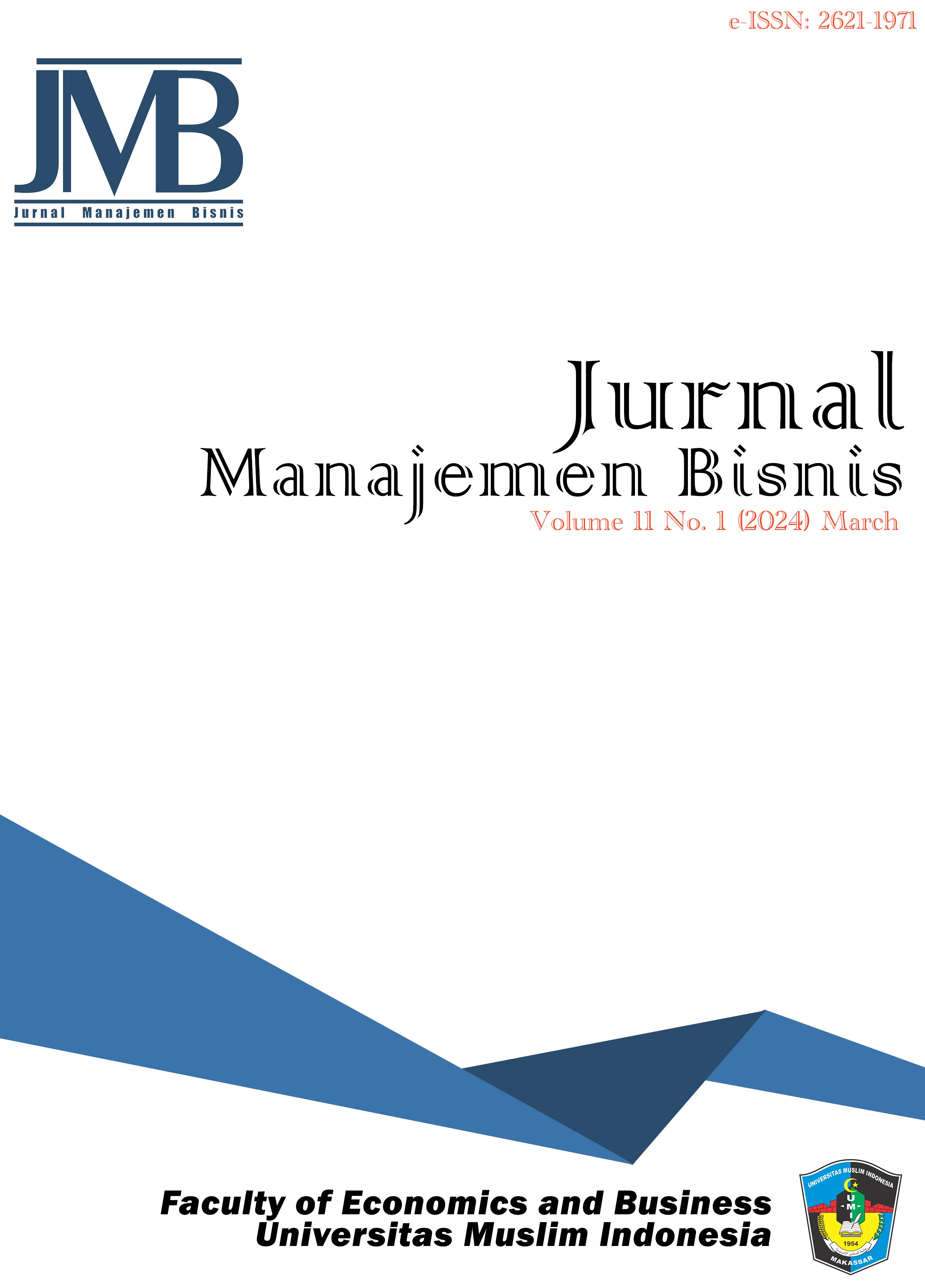Organizational Transformation in Adopting Hybrid Work Models: A Literature Review on Organizational Changes and Employee Readiness
DOI:
https://doi.org/10.33096/jmb.v11i2.806Keywords:
Hybrid Work, Organizational Dynamics, Employee Readiness, Longitudinal Studies, Interdisciplinary ResearchAbstract
This study explores the implications of hybrid work models on organizational dynamics and employee well-being. Through a qualitative literature review approach, the research examines existing literature on hybrid work, focusing on organizational changes, employee readiness, and long-term effects. The methodology systematically reviews scholarly articles, books, and academic sources, synthesizing key themes, theoretical frameworks, and empirical findings. The results reveal mixed findings regarding the impact of hybrid work on various aspects of organizational functioning and employee experiences. While hybrid work offers opportunities for flexibility and autonomy, it also presents challenges such as communication barriers, blurred boundaries between work and personal life, and uncertainties regarding career advancement. Longitudinal studies and comparative analyses across industries, cultures, and geographic regions are recommended to track the evolution of hybrid work arrangements and assess their sustainability in dynamic environments. Interdisciplinary approaches and integrating emerging technologies can contribute to evidence-based decision-making and foster innovation in hybrid work design and implementation.
Downloads
References
Ahmad, S., Ali, N. A., Jantan, A. H., Bowyer, D., Campbell, N., & Reaz, M. (2020). Organizational effectiveness through transformational leadership and technology innovation: a systematic literature review and future research agenda. Journal of International Business and Management. https://doi.org/https://doi.org/10.37227/jibm-2020-04-44
Alavi, M., & Leidner, D. E. (2001). Research commentary: Technology-mediated learning—A call for greater depth and breadth of research. Information Systems Research, 12(1), 1–10. https://doi.org/10.1287/isre.12.1.1.9720
Allen, T. D., French, K. A., Dumani, S., & Shockley, K. M. (2020). A cross-national meta-analytic examination of predictors and outcomes associated with work–family conflict. Journal of Applied Psychology, 105(6), 539. https://doi.org/https://doi.org/10.1037/apl0000442
Andrew, A., & Mohankumar, S. (2017). The relationship between self-efficacy and employee readiness for organizational change. International Journal of Engineering Research and General Science, 5(1), 16–27.
Andrews, T. C., Conaway, E. P., Zhao, J., & Dolan, E. L. (2016). Colleagues as change agents: How department networks and opinion leaders influence teaching at a single research university. CBE—Life Sciences Education, 15(2), ar15. https://doi.org/https://doi.org/10.1187/cbe.15-08-0170
Apergi, L. A., Bjarnadottir, M. V, Baras, J. S., Golden, B. L., Anderson, K. M., Chou, J., & Shara, N. (2021). Voice interface technology adoption by patients with heart failure: pilot comparison study. JMIR MHealth and UHealth, 9(4), e24646. https://doi.org/https://doi.org/10.2196/24646
Bloom, N., Liang, J., Roberts, J., & Ying, Z. J. (2015). Does working from home work? Evidence from a Chinese experiment. The Quarterly Journal of Economics, 130(1), 165–218. https://doi.org/https://doi.org/10.48152/ssrp-t9fr-jr64
Derue, H., & Ribeiro-da-Silva, A. (2023). Therapeutic exercise interventions in rat models of arthritis. Neurobiology of Pain, 100130.
Felstead, A., Gallie, D., Green, F., & Henseke, G. (2019). The determinants of skills use and work pressure: A longitudinal analysis. Economic and Industrial Democracy, 40(3), 730–754. https://doi.org/https://doi.org/10.1177/0143831X16656412
Gajendran, R. S., & Harrison, D. A. (2007). The good, the bad, and the unknown about telecommuting: meta-analysis of psychological mediators and individual consequences. Journal of Applied Psychology, 92(6), 1524. https://doi.org/https://doi.org/10.1037/0021-9010.92.6.1524
Gajendran, R. S., Harrison, D. A., & Delaney‐Klinger, K. (2015). Are telecommuters remotely good citizens? Unpacking telecommuting’s effects on performance via i‐deals and job resources. Personnel Psychology, 68(2), 353–393. https://doi.org/https://doi.org/10.1111/PEPS.12082
Gibson, C. B., Gilson, L. L., Griffith, T. L., & O’Neill, T. A. (2023). Should employees be required to return to the office? Organizational Dynamics, 52(2), 100981. https://doi.org/https://doi.org/10.1016/j.orgdyn.2023.100981
Grant, K. N., Macrae, M. L., & Ali, G. A. (2019). Differences in preferential flow with antecedent moisture conditions and soil texture: Implications for subsurface P transport. Hydrological Processes, 33(15), 2068–2079. https://doi.org/https://doi.org/10.1002/hyp.13454
Mishra, N., & Bharti, T. (2023). Exploring the nexus of social support, work–life balance and life satisfaction in hybrid work scenario in learning organizations. The Learning Organization, ahead-of-print. https://doi.org/https://doi.org/10.1108/tlo-08-2022-0099
Modaresnezhad, M., Andrews, M. C., Mesmer‐Magnus, J., Viswesvaran, C., & Deshpande, S. (2021). Anxiety, job satisfaction, supervisor support and turnover intentions of mid‐career nurses: a structural equation model analysis. Journal of Nursing Management, 29(5), 931–942. https://doi.org/https://doi.org/10.1111/jonm.13229
Strassburger, C., Wachholz, F., Peters, M., Schnitzer, M., & Blank, C. (2023). Organizational leisure benefits–a resource to facilitate employees’ work-life balance? Employee Relations: The International Journal, 45(3), 585–602. https://doi.org/https://doi.org/10.1108/er-10-2021-0428
Zhang, C., Nahrgang, J. D., Ashford, S. J., & DeRue, D. S. (2020). The risky side of leadership: Conceptualizing risk perceptions in informal leadership and investigating the effects of their over-time changes in teams. Organization Science, 31(5), 1138–1158. https://doi.org/https://doi.org/10.1287/orsc.2019.1350
Downloads
Published
Issue
Section
License
Copyright (c) 2024 Jurnal Manajemen Bisnis

This work is licensed under a Creative Commons Attribution 4.0 International License.






